I first met Eric and Trish Humphreys at a dam management workshop not long after I started working at Moreton Bay Regional Council. I was impressed with their level of interest in the topic as they studiously took notes and asked insightful questions. Since that day, the Humphreys have been at almost every workshop and event I have been involved in, always eager to learn more about fauna, flora and habitat restoration. Trish states, “support from Land for Wildlife Officers is actively sought and is highly valued.”
The Humphreys moved to their property in 1993. Trish explains, “Most of the place had been bulldozed clear and used as horse paddocks. We wish we’d known enough then to stop the weeds in their tracks when we first arrived. A couple of our neighbours were Land for Wildlife members, and it became increasingly clear that we could make a greater impact on the environment if we too became a Land for Wildlife property. We joined Land for Wildlife in February 2009. We wanted to get involved so we could learn how to maintain and improve existing habitat and to maximise the potential of this property to attract a diversity of wildlife.”
Since joining the program, Trish and Eric have been gradually battling weeds including lantana, ochna, Easter cassia, corky passion, snakeweed, creeping lantana, mist ower and blue billy goat as well as revegetating through planting and encouraging natural regeneration. Through their research, the Humphreys have learnt how to use a variety of different weed control techniques and even propagate their own plants for revegetation.
Providing habitat by not just planting trees is an important part of the Humphreys’ property management. They have piles of woody debris throughout their wet eucalypt forest to provide habitat for insects, skinks, lizards and snakes. They have made ten nesting boxes for possums and gliders. During the latest property visit, we were able to capture footage of four Common Brushtail Possums inhabiting their nest boxes. The Humphreys have also seen a Squirrel Glider using one of the nest boxes.
The Humphreys have also been painstakingly removing barbed wire from their property. They have seen firsthand the terrible injuries to our native wildlife caused by barbed wire. Several years ago, they helped rescue a Little Red Flying-fox by contacting a local bat care and rescue volunteer group when they noticed it had become entangled.
Eric and Trish are a part of a close knit group of Land for Wildlife members at Whiteside. They often get together with their neighbours to share wildlife sightings, discuss options for habitat regeneration on their property, identify species of plants and share resources. Their community involvement extends to their local Bushcare group, where they are regular volunteers and help to rehabilitate bushland at North Pine Country Park/Old Petrie Town.
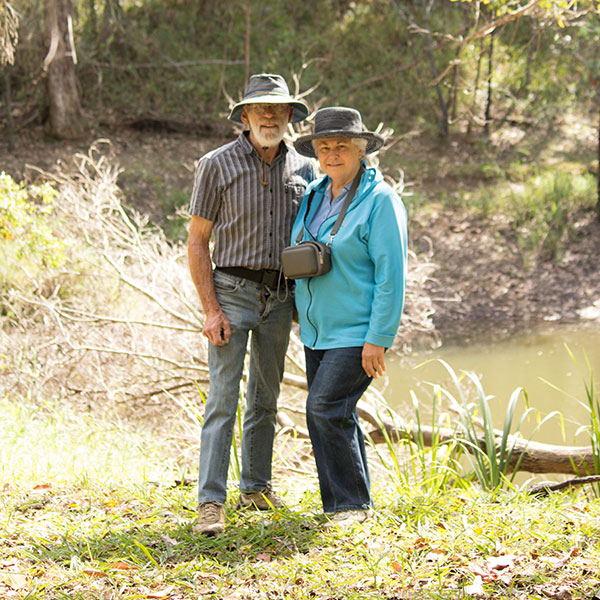
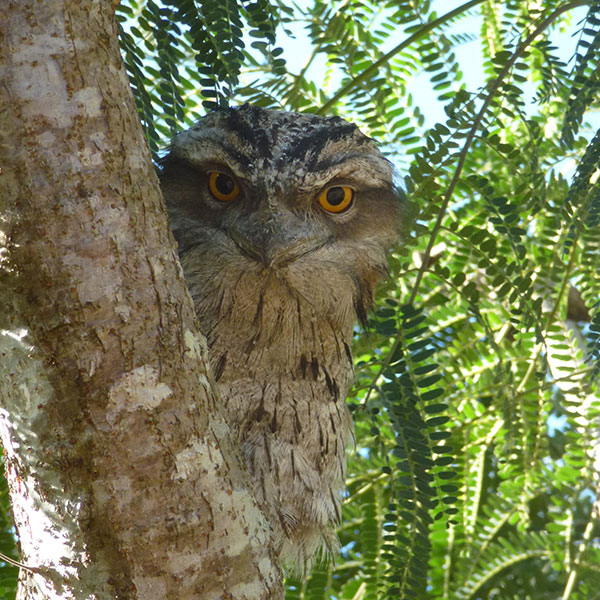
Eric and Trish Humphreys are proud Land for Wildlife members and often get together with neighbouring Land for Wildlife members to chat about wildlife stories, identify plants, discuss restoration techniques and share resources.
The Humphreys have learnt some valuable lessons along their Land for Wildlife journey. Eric says, “Some of the key things that we have learnt are the importance of knowing our Regional Ecosystems. That the problems associated with regeneration and weed control are not confined to our property. There are so many benefits in attending Land for Wildlife activities to acquire knowledge and skills. Presenters and our Land for Wildlife Officers can offer solutions to the problems we encounter. On the other hand, we have been able to share with others things that have worked here and are delighted when we find our suggestions have worked elsewhere.”
“Tackling smaller areas is more sustainable and less frustrating than clearing large areas – and is more beneficial to wildlife.”
Trish and Eric enjoy monitoring fauna on their property. Sightings include the Squirrel Glider, Spotted Pardalote, Koala, Pacific Baza, Short-beaked Echidna, Wedge- tailed Eagle, Powerful Owl, Little Red Flying-fox, Forest King fisher, Red-browed Finch, Eastern Yellow Robin, Tawny Frogmouth and many more.
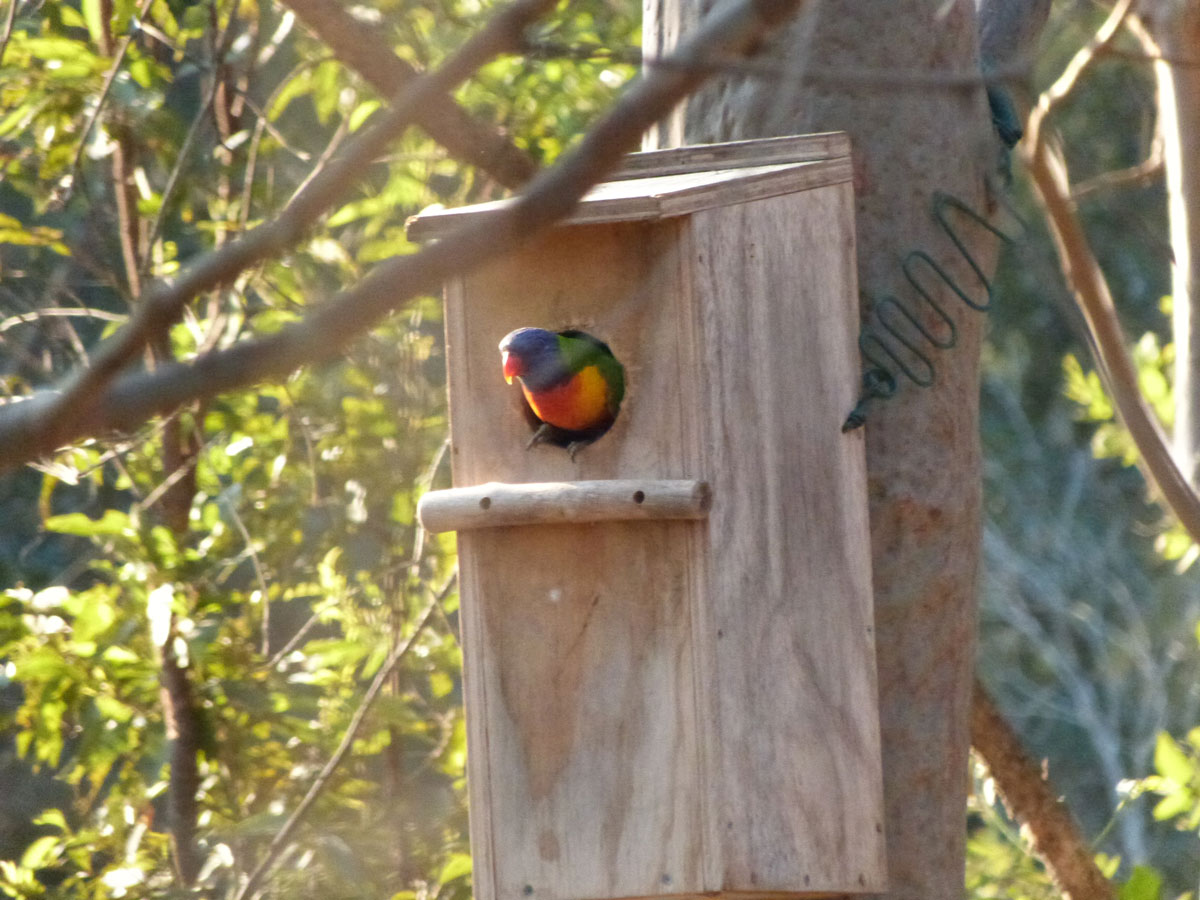
This is one of many nest boxes that were installed and are now being used on the Humphrey’s property.
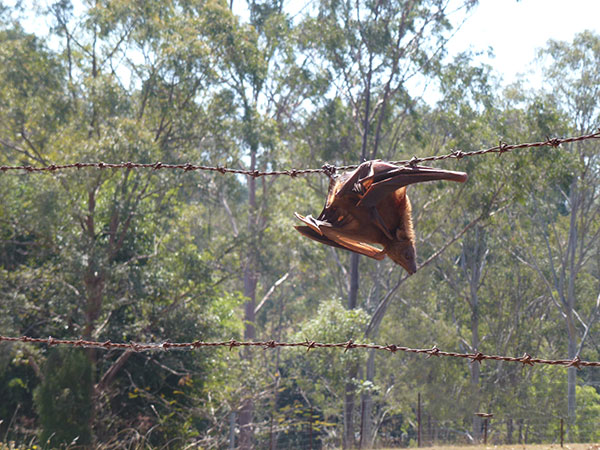
Seeing wildlife such as this Little Red Flying-fox entangled in barbed wire motivated Eric and Trish Humphreys to methodically remove all barbed wire fencing from their property. This flying-fox was handed to wildlife carers.
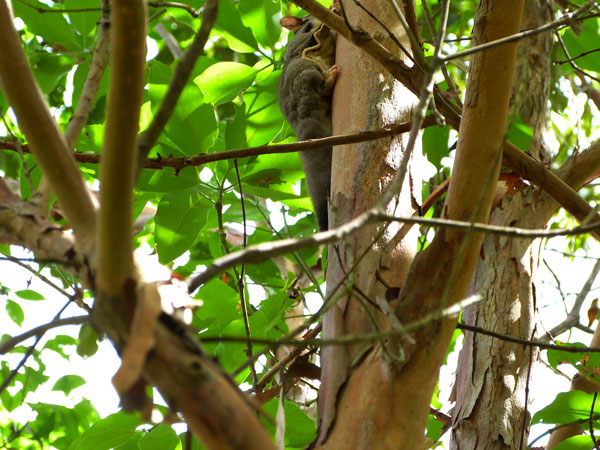
A Squirrel Glider photographed on its way back to its nest box on the Humphrey’s property
When asked about their greatest achievements on their property to date, the Humphreys humbly state; “Taking time to appreciate what we’ve gained so far. Realising that tackling smaller areas of the property is more sustainable and is less frustrating than clearing large areas – and is more beneficial to wildlife. Taking on smaller projects also gives better opportunity to target specific plantings for that area.”
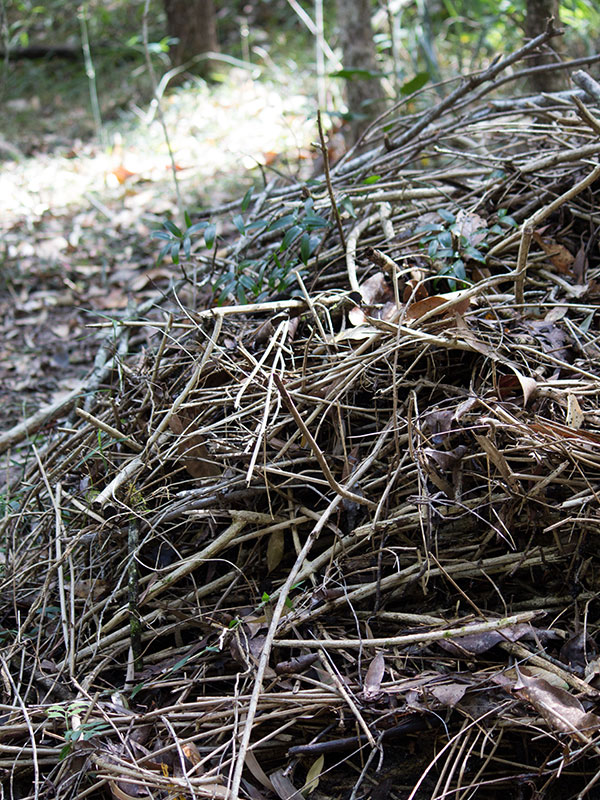
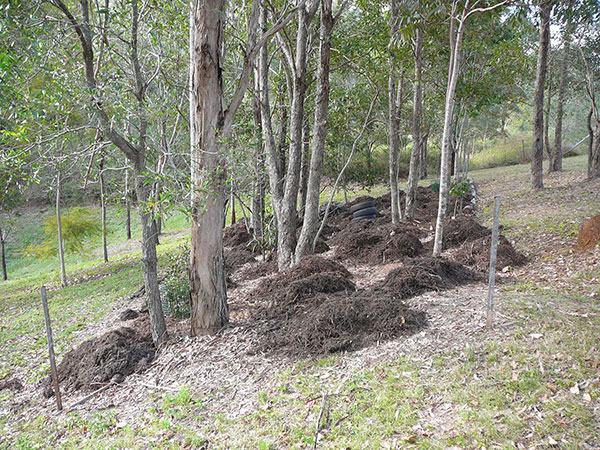
(Left:) Piles of vegetative debris are retained as habitat for small animals such as skinks, lizards and invertebrates.
(Above:) Mulch is spread in areas undergoing revegetation.
Over the next year, Eric and Trish will be working on revegetating an ephemeral gully on their property, continuing their ongoing battle with weeds and attending more Land for Wildlife workshops.
Editorial note: This article was received in early 2014 prior to Danielle leaving Moreton Bay Regional Council. She now works as a Land for Wildlife Officer with the neighbouring Sunshine Coast Council.
Article by Danielle Crawford (former) Land for Wildlife Officer Moreton Bay Regional Council
